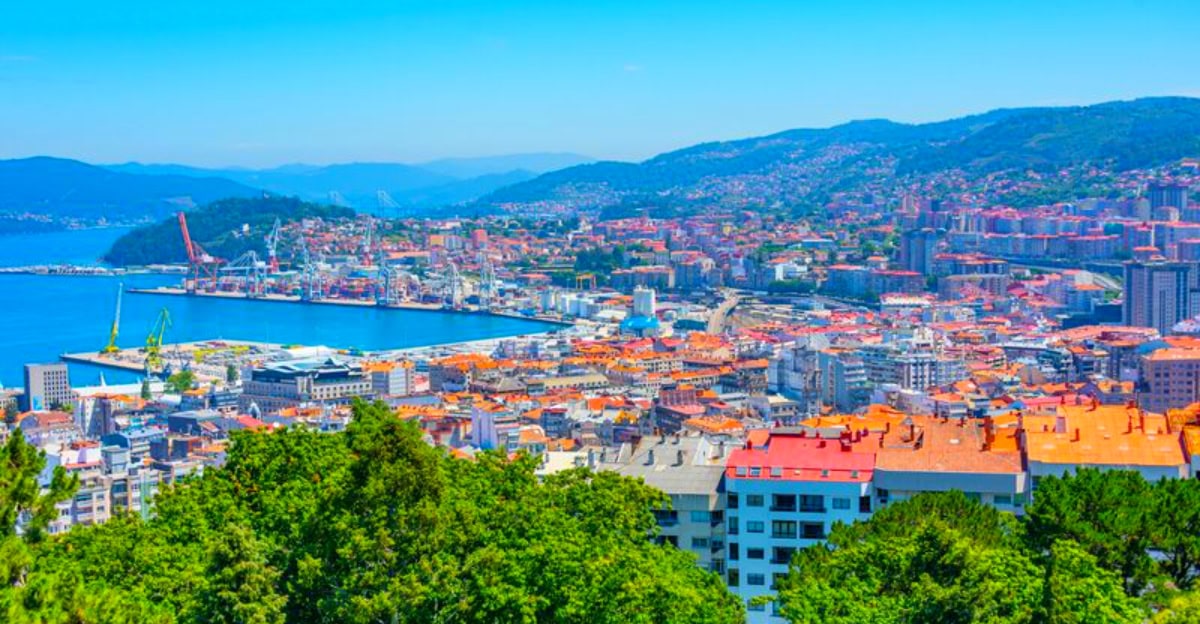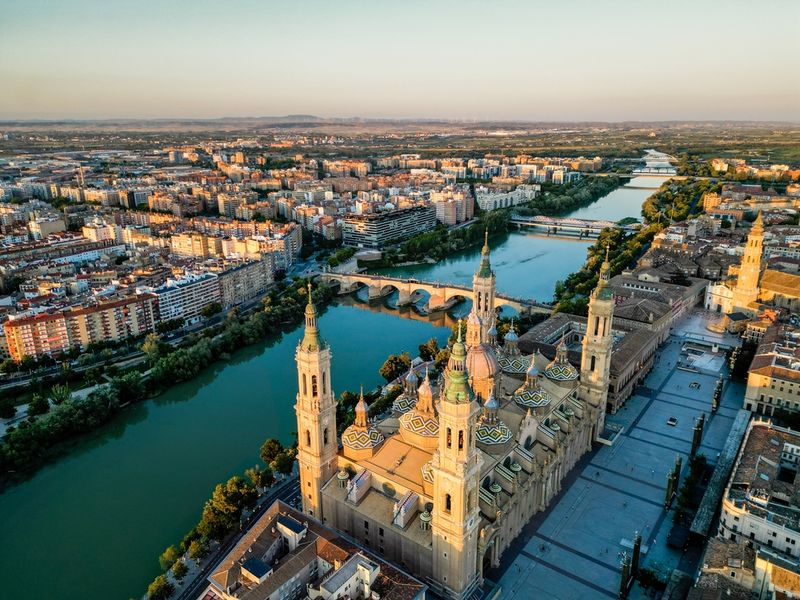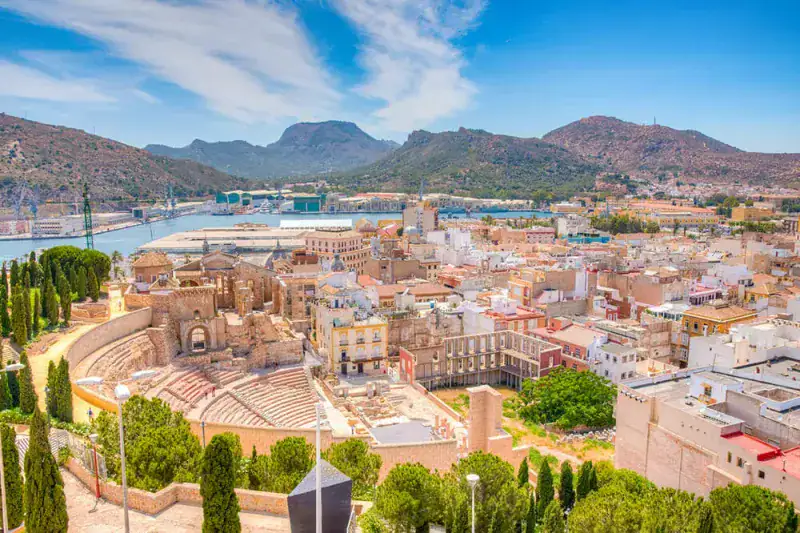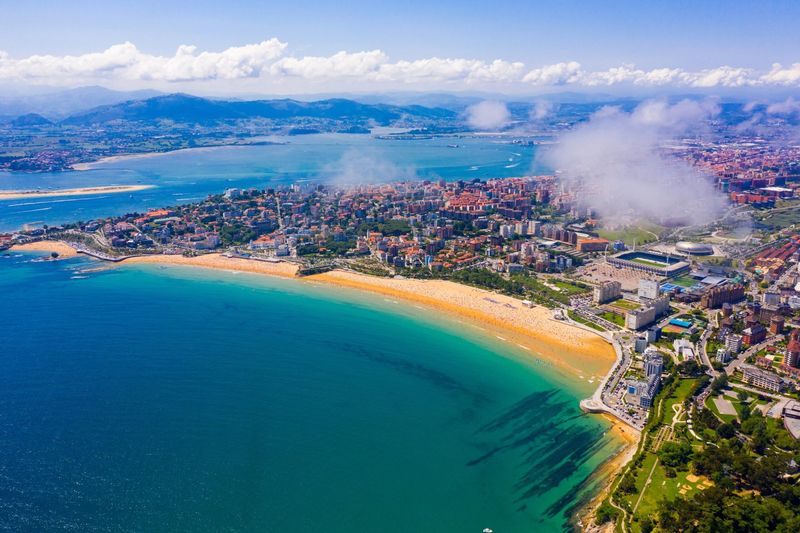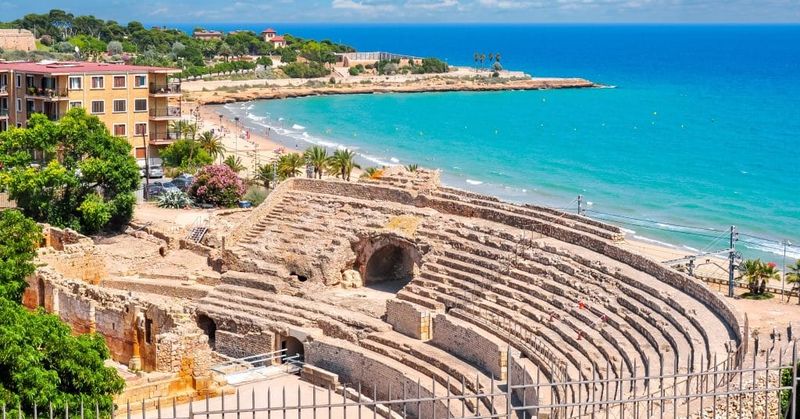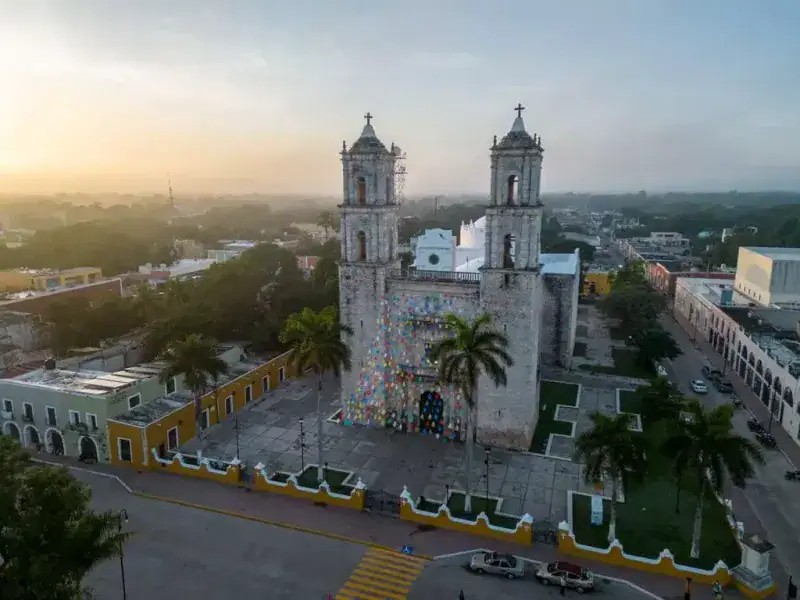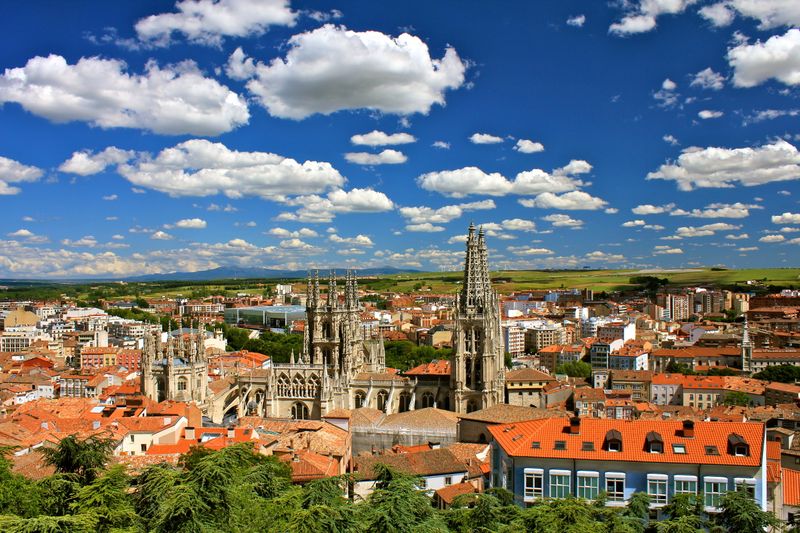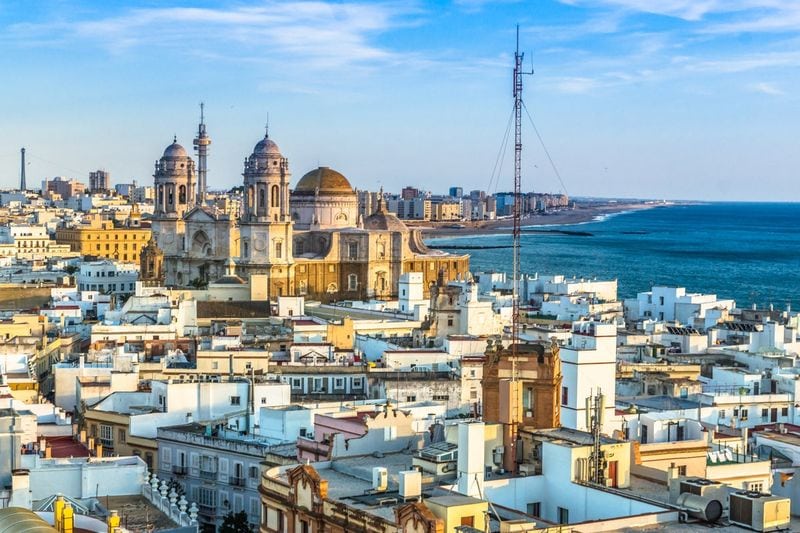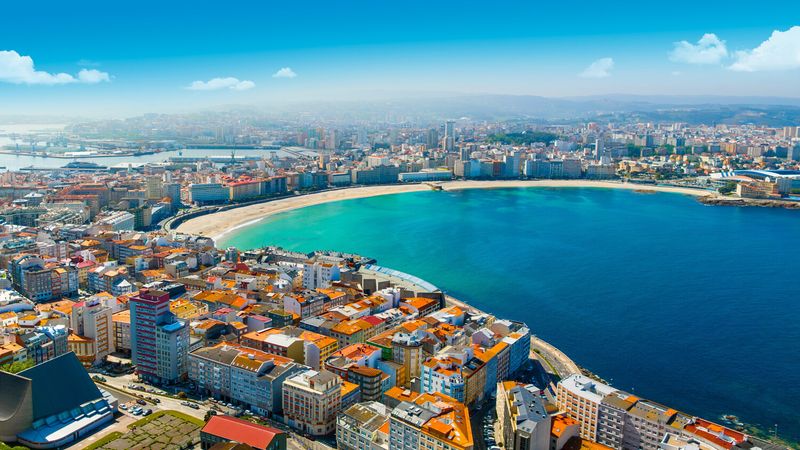Barcelona gets all the attention, but Spain’s hidden gems are having their moment right now. From ancient Roman ruins to world-class seafood, these ten cities are attracting record numbers of visitors without the overwhelming crowds. Smart travelers are discovering authentic Spanish culture, incredible food scenes, and fascinating history in places most tourists haven’t even heard of yet.
1. Zaragoza (Aragón)
Zaragoza welcomed 1.27 million visitors in 2024, marking its best year ever with foreign travel jumping 13%. The stunning Basílica del Pilar rises majestically over the Ebro River, creating postcard-perfect sunset views. Art lovers trace Goya’s footsteps throughout the city, while food enthusiasts dive into El Tubo’s famous tapas scene.
Unlike Barcelona’s tourist traps, Zaragoza offers genuine Spanish experiences at local prices. The city perfectly balances rich history with modern energy, making every corner worth exploring.
2. Murcia (Región de Murcia)
Murcia’s baroque cathedral facade practically glows in the Mediterranean sunshine, welcoming over 537,000 travelers who discovered this southeastern treasure in 2024. The region hit all-time highs for international visitors, yet crowds remain refreshingly manageable.
Local marinera tapas represent culinary traditions you won’t find anywhere else in Spain. These small plates showcase the region’s unique position between sea and fertile farmland.
Floridablanca gardens provide peaceful escapes from sightseeing, offering shaded walkways and fountains. The city rewards curious travelers with authentic Spanish culture minus the tourist markup prices found in more famous destinations.
3. Santander (Cantabria)
Northern Spain’s elegant coastal gem recorded over one million hotel nights in 2024, an impressive 11% increase that reflects its growing appeal. Santander offers something Barcelona can’t: stunning beaches without suffocating crowds.
Bay promenades invite leisurely strolls with mountain backdrops, while the contemporary Centro Botín showcases world-class art. Sardinero beaches rival any Mediterranean coastline but maintain their peaceful, local character.
Strong shoulder seasons mean pleasant weather extends beyond typical summer months. The city combines seaside relaxation with cultural sophistication, creating perfect conditions for travelers seeking both beach time and intellectual stimulation in one beautiful package.
4. Tarragona (Catalonia)
Romans knew prime real estate when they saw it, and Tarragona’s UNESCO amphitheatre proves their excellent taste. This coastal city welcomed 520,000+ tourists in 2024, with remarkable growth happening outside peak summer months.
The ancient amphitheatre sits dramatically beside the Mediterranean, creating one of Europe’s most spectacular historical settings. Cathedral views from the old town stretch across red-tiled rooftops to sparkling waters.
Traditional vermut bars serve afternoon drinks exactly as Catalans have enjoyed them for generations. Unlike Barcelona’s touristy vermut spots, Tarragona’s bars cater primarily to locals, ensuring authentic experiences and reasonable prices for curious visitors exploring Catalonia’s Roman heritage.
5. Valladolid (Castilla y León)
Spain’s former capital doesn’t need royal status to impress modern travelers. Valladolid achieved historic highs in 2024 with 900,000 overnight stays and 470,000 visitors, signaling its remarkable post-pandemic recovery.
Wine enthusiasts use the city as their Ribera del Duero basecamp, exploring world-renowned vineyards within easy driving distance. The National Sculpture Museum houses masterpieces that would draw crowds anywhere else.
Local menús del día offer incredible value, featuring multi-course meals that cost less than single appetizers in Barcelona. The city provides authentic Castilian culture without tourist inflation, making every euro stretch further while delivering genuinely memorable Spanish experiences.
6. Burgos (Castilla y León)
Gothic spires pierce the Castilian sky in Burgos, where 2024 brought record-breaking visitor numbers drawn by the city’s magnificent UNESCO cathedral. The riverside Paseo del Espolón creates perfect evening strolls under ancient trees.
Cathedral architecture represents Gothic mastery at its finest, rivaling any European religious building. Each stone tells stories of medieval craftsmanship and spiritual devotion spanning centuries.
Post-museum morcilla sandwiches provide quintessentially local experiences that food magazines haven’t discovered yet. The blood sausage specialty tastes much better than it sounds, especially when enjoyed alongside local wines in traditional bars where tourists remain welcome curiosities rather than primary customers.
7. Cádiz (Andalusia)
Ancient Phoenician traders chose this Atlantic peninsula wisely, and modern visitors are finally catching on. Tourist office visits nearly doubled in 2024 to 449,677, surpassing pre-pandemic levels as word spreads about Cádiz’s authentic charm.
La Caleta beach creates a perfect crescent between old fortifications, while the seawall walk offers endless ocean views. Fresh seafood markets bustle with daily catches from Atlantic waters.
Flamenco peñas provide intimate musical experiences far removed from Seville’s tourist shows. These neighborhood clubs welcome respectful visitors into genuine cultural traditions, where passion and artistry matter more than ticket prices or scheduled performance times.
8. Vigo (Galicia)
Galicia’s largest city keeps breaking its own tourism records, nearly reaching one million hotel nights in 2024. September alone set new benchmarks, while international overnight stays peaked during summer months.
Cíes Islands day trips reveal pristine beaches that National Geographic called among the world’s best. O Berbés neighborhood serves incredible seafood in no-nonsense restaurants where locals have eaten for generations.
Old town wine bars pour Albariño and Ribeiro wines alongside perfectly prepared pulpo. Winter’s famous holiday light displays now attract visitors year-round, creating magical evening atmospheres that rival any European Christmas market while maintaining distinctly Galician character and hospitality.
9. A Coruña (Galicia)
November 2024 brought record-breaking visitor numbers to this Atlantic corner of Spain, where the world’s oldest functioning lighthouse still guides ships safely to shore. The Tower of Hercules creates stunning golden hour photography opportunities.
Atlantic-facing promenades stretch for miles, offering dramatic ocean views and fresh sea breezes. Local pulpo a feira represents Galician cooking at its finest—simple ingredients prepared with centuries of accumulated wisdom.
Summer 2025 continued the momentum with record occupancy levels, yet the city maintains its authentic character. Unlike overcrowded coastal destinations, A Coruña balances tourism growth with local life, ensuring visitors experience genuine Galician culture.
10. Vitoria-Gasteiz (Basque Country)
The Basque capital’s medieval almond-shaped old town winds through narrow streets where May 2024 brought a remarkable 16.5% visitor increase. Green belts surrounding the historic center earned the city European Capital of Green recognition.
Rioja Alavesa wine country lies just minutes away, offering world-class tastings without Rioja’s tourist premiums. Local wine bars serve exceptional regional bottles at prices that would shock visitors from more famous wine regions.
The city positions itself brilliantly as an alternative to Spain’s overcrowded destinations, providing authentic Basque culture with easy access to both mountains and vineyards. Smart travelers discover incredible value and genuine experiences.
